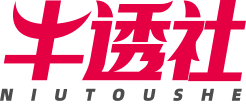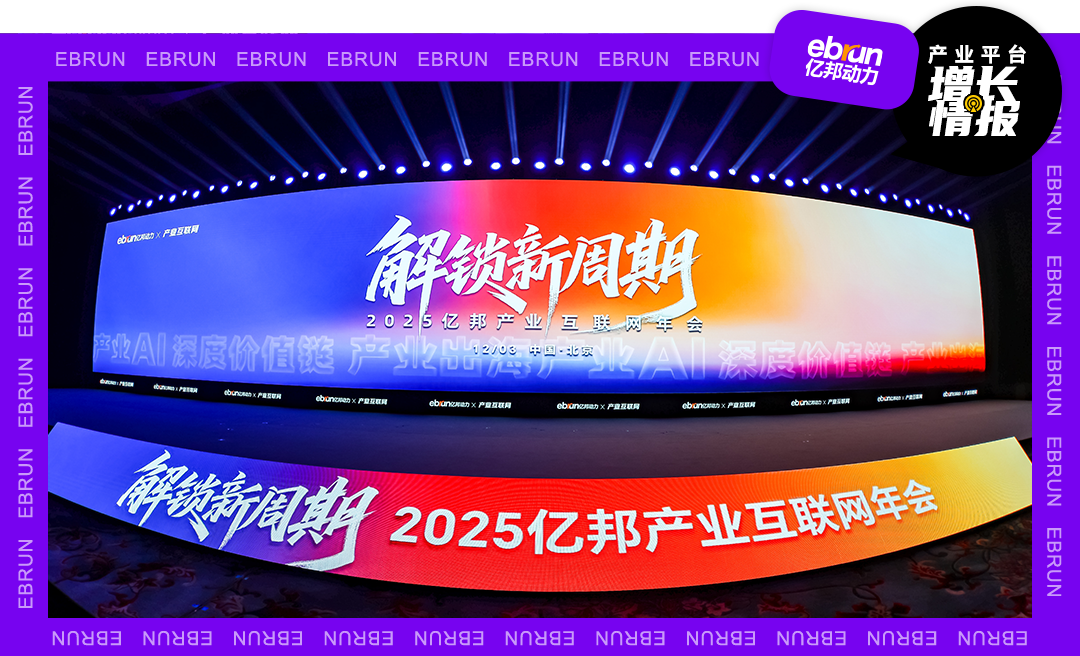SaaS vs. ASP : 警惕披着羊皮的狼
-
2017-09-05
纪伟国
上一篇“软件进入Saas时代,我们竟然要打假?”的文章,引起了一些争议,当然更多的朋友还是询问:“如何更容易地识别真假SaaS?”,我在网上找了一篇文章,作者和我的观点是一致的,但他用更加直观和形象的方式解答了大家的疑问。
作者Julie Roy,是Kyriba的CMO。她的主要观点可以总结如下:如果把SaaS比喻为“羊”,ASP是就是企图混迹其中的披着羊皮的“狼”。因为虽然同在云端,但真正的SaaS是基于多租户架构的软件,而ASP的本质则是为每个客户安装一套软件,这种初始架构设计的不同,就产生了巨大的价值差异:
1、客户支持
软件总有意外,例如:文件导入不进去。对于Saas只检查并修复一个软件,而ASP要面对成百上千个软件。所以,在软件的升级、监控、及问题处理上的客户支持的效率和力度上就差异很大。
2、安全架构
Saas的安全包括:访问安全、网络安全、数据安全、流程安全等等。Saas基于一套安全基础架构和设备去维护一个软件,而ASP又要面对数千个软件,那就是没有运维、没有安全。
3、服务水平
Saas是分布式的业务架构,大量冗余设计、数据备份、异地容灾,才可以保障RTO及RPO,进而高的SLA。ASP模式又要面成百上千的软件、无法做这些体系性的架构,仍然无法保障高的服务水准。然而他们口头的SLA承诺却远高于Salesforce,这里面的道理你懂滴!
4、生态整合
Saas软件之间可以非常方便地整合,从而形成生态系统,例如:北森的招聘系统接入体检、征信、视频面试,客户可以一站式地获得全套解决方案。ASP模式同样面临着巨大的困难及成本,因此难以实现。
5、基于未来的选择
本质上而言,旧的ASP软件是无法迁移成SaaS软件的,除非从根上重新架构这个软件,而这就意味着重建。因此客户如果购买一个过时的、老旧的产品则意味着要面临非常大的更换风险。
结论:
传统软件的供应商都在把“水”搅浑,把自己归为Saas,却无法提供和Saas一样的服务、性能、和安全水准。客户需要自己做些调查研究,搞清楚真假Saas,避免掉进陷阱里。
以下是原文,作者在文章最后给出了如何识别SaaS及ASP的非常简单可行的方法,可以直接拉到最下方阅读。
 With the growth of SaaS solutions in treasury, it seems that everyone is clamoring to be “in the cloud.” This high demand is for good reason - Software-as-a-Service (SaaS) and cloud deployments offer amazing advantages for treasury departments who implement treasury management systems. With many vendors claiming to be SaaS (even when they’re not) there is also much confusion in terms of vocabulary, determining what is really SaaS or cloud, and more importantly, why you should care.
ASP - “the Wolf”
Hosted solutions, originally called ASPs (Application Service Providers) were, and continue to be, installed solutions where the database is hosted by your vendor or a third party. They are offered via the Internet and your IT team plays a small role in ensuring the software is integrated within your environment. With no other alternatives, ASP was a reasonable way to take older, installed systems and access them using a “thin client.” Many software providers still offer ASP solutions, sometimes referring to them as Hybrid or Private Cloud solutions.
SaaS – “the Sheep”
Once SaaS was introduced it became obvious that SaaS (sometimes referred to as “public cloud” or “in the cloud” solutions) was better on all levels. SaaS solutions are designed and optimized for web browsers, offering unique advantages over ASP in terms of support, performance, security, service levels, system integration, and software viability.
SaaS solutions deliver the latest innovation with better security at lower cost than ASP or on-premise solutions.
1、Customer Support
While many ASP software vendors have perfected (to the extent they can) the upgrade and support process, the fact remains that an ASP is still an application that used to be installed on-premise. It remains an individualized configuration; set up and hosted specifi cally for you. This means that individual attention is required for software upgrades or even daily application support (e.g. “why did my payment file not upload properly?”). There is only so much that can be achieved automatically for ASP environments, without the need for human involvement. This is yet another differentiator for SaaS, where dramatically less support is required to troubleshoot problems, mainly because systems can be more easily monitored and problems isolated. When it comes to upgrades, software updates are performed automatically by the vendor, seamlessly, without clients having to lift a fi nger. When it comes to upgrades, SaaS is a breath of fresh air.
2、Security
Everyone who looks at ASP or SaaS has the same question: “is my data secure?” It is critical to ask this question because the answer varies by vendor. Data security is paramount and SaaS has a distinct advantage. Data security can be achieved by investing appropriately (and heavily) in network security, encryption, access rights, scalable architecture, and experienced personnel to ensure that systems are implemented and monitored properly.
SaaS providers benefi t from economies of scale; the cost of operating secure infrastructure and facilities can be spread across all clients since they all run on the same system. This is contrary to ASP, where individual confi guration and investment are needed for each customer. This is one of the most important reasons why IT professionals favor SaaS over ASP.
3、Service Levels
When it comes to service levels, two metrics matter: RTO (Recovery Time Objective) and RPO (Recovery Point Objective). While these may not be common terms in treasury, they are critical objectives for your IT department. In simple terms, RTO is how much time it will take until you are returned to full operations after a disruption. RPO is how much data you can lose while systems are down.
In treasury, timeliness and uptime are vital, so SaaS vendors offer parallel setups in multiple geographic locations. They offer full redundancy so that there are multiple points of failure (i.e. a number of failures would have to occur, in parallel, to create a serious problem). This is a key difference from ASP, which typically has a single point of failure making downtime more likely. Full redundancy of your software, data, and connectivity is the minimum standard for any treasury department. Without that, your vendor’s RTO is many hours (or days) and your RPO is destructive. Could you imagine not being able to run treasury for most of the day?
4. Integration
SaaS systems integrate easily with other SaaS systems. “In the cloud” makes connecting platforms together much simpler. Web technologies exist to support SaaS solutions connecting behind the scenes rather than as a fi le interface (remember the days of using .csv fi les to transfer data from your ERP system to your treasury system or vice versa?). SaaS-based trading portals, analytics tools and data providers - all can integrate (rather than just interface) with the treasury system to make it transparent to the user how everything fi ts together. In an ASP environment, not only does the user have to get involved, but so does your IT team. With SaaS, integration can be completely behind the scenes.
5、Viability
SaaS and cloud solutions dominate every industry, not just treasury and finance. Software developers don’t build on-premise or ASP solutions – they build SaaS. There is no such thing as “partly SaaS.” And there isn’t a way systems can be “moved” to SaaS – they need to be rebuilt from the ground up using new technologies. As a result, ASP systems are becoming obsolete and are being replaced with newer SaaS solutions in the cloud. It’s evident the viability of ASP solutions is in question and users of these solutions should plan accordingly.
Summary
ASP and hosted vendors (wolves) try to “cloud” the waters and make some people believe that they are SaaS, or that ASP is the same as SaaS, i.e. that the private cloud is equivalent to being “in the (public) cloud.” Obviously, there are signifi cant differences and ASP software vendors know that until their software (not just their sales pitch) “goes SaaS” they won’t be able to offer service levels, performance, and the security that true SaaS vendors (sheep) can provide. By doing your research, which may include engaging experts in treasury technology, you can validate the distinctions and what those differences mean for you. Put yourself in the position to take full, not partial, advantage of the Internet.
So how do you tell a wolf in sheep’s Clothing?
Fortunately, distinguishing ASP from SaaS iseasier than you may have thought. Here are some key signs to look for:
With the growth of SaaS solutions in treasury, it seems that everyone is clamoring to be “in the cloud.” This high demand is for good reason - Software-as-a-Service (SaaS) and cloud deployments offer amazing advantages for treasury departments who implement treasury management systems. With many vendors claiming to be SaaS (even when they’re not) there is also much confusion in terms of vocabulary, determining what is really SaaS or cloud, and more importantly, why you should care.
ASP - “the Wolf”
Hosted solutions, originally called ASPs (Application Service Providers) were, and continue to be, installed solutions where the database is hosted by your vendor or a third party. They are offered via the Internet and your IT team plays a small role in ensuring the software is integrated within your environment. With no other alternatives, ASP was a reasonable way to take older, installed systems and access them using a “thin client.” Many software providers still offer ASP solutions, sometimes referring to them as Hybrid or Private Cloud solutions.
SaaS – “the Sheep”
Once SaaS was introduced it became obvious that SaaS (sometimes referred to as “public cloud” or “in the cloud” solutions) was better on all levels. SaaS solutions are designed and optimized for web browsers, offering unique advantages over ASP in terms of support, performance, security, service levels, system integration, and software viability.
SaaS solutions deliver the latest innovation with better security at lower cost than ASP or on-premise solutions.
1、Customer Support
While many ASP software vendors have perfected (to the extent they can) the upgrade and support process, the fact remains that an ASP is still an application that used to be installed on-premise. It remains an individualized configuration; set up and hosted specifi cally for you. This means that individual attention is required for software upgrades or even daily application support (e.g. “why did my payment file not upload properly?”). There is only so much that can be achieved automatically for ASP environments, without the need for human involvement. This is yet another differentiator for SaaS, where dramatically less support is required to troubleshoot problems, mainly because systems can be more easily monitored and problems isolated. When it comes to upgrades, software updates are performed automatically by the vendor, seamlessly, without clients having to lift a fi nger. When it comes to upgrades, SaaS is a breath of fresh air.
2、Security
Everyone who looks at ASP or SaaS has the same question: “is my data secure?” It is critical to ask this question because the answer varies by vendor. Data security is paramount and SaaS has a distinct advantage. Data security can be achieved by investing appropriately (and heavily) in network security, encryption, access rights, scalable architecture, and experienced personnel to ensure that systems are implemented and monitored properly.
SaaS providers benefi t from economies of scale; the cost of operating secure infrastructure and facilities can be spread across all clients since they all run on the same system. This is contrary to ASP, where individual confi guration and investment are needed for each customer. This is one of the most important reasons why IT professionals favor SaaS over ASP.
3、Service Levels
When it comes to service levels, two metrics matter: RTO (Recovery Time Objective) and RPO (Recovery Point Objective). While these may not be common terms in treasury, they are critical objectives for your IT department. In simple terms, RTO is how much time it will take until you are returned to full operations after a disruption. RPO is how much data you can lose while systems are down.
In treasury, timeliness and uptime are vital, so SaaS vendors offer parallel setups in multiple geographic locations. They offer full redundancy so that there are multiple points of failure (i.e. a number of failures would have to occur, in parallel, to create a serious problem). This is a key difference from ASP, which typically has a single point of failure making downtime more likely. Full redundancy of your software, data, and connectivity is the minimum standard for any treasury department. Without that, your vendor’s RTO is many hours (or days) and your RPO is destructive. Could you imagine not being able to run treasury for most of the day?
4. Integration
SaaS systems integrate easily with other SaaS systems. “In the cloud” makes connecting platforms together much simpler. Web technologies exist to support SaaS solutions connecting behind the scenes rather than as a fi le interface (remember the days of using .csv fi les to transfer data from your ERP system to your treasury system or vice versa?). SaaS-based trading portals, analytics tools and data providers - all can integrate (rather than just interface) with the treasury system to make it transparent to the user how everything fi ts together. In an ASP environment, not only does the user have to get involved, but so does your IT team. With SaaS, integration can be completely behind the scenes.
5、Viability
SaaS and cloud solutions dominate every industry, not just treasury and finance. Software developers don’t build on-premise or ASP solutions – they build SaaS. There is no such thing as “partly SaaS.” And there isn’t a way systems can be “moved” to SaaS – they need to be rebuilt from the ground up using new technologies. As a result, ASP systems are becoming obsolete and are being replaced with newer SaaS solutions in the cloud. It’s evident the viability of ASP solutions is in question and users of these solutions should plan accordingly.
Summary
ASP and hosted vendors (wolves) try to “cloud” the waters and make some people believe that they are SaaS, or that ASP is the same as SaaS, i.e. that the private cloud is equivalent to being “in the (public) cloud.” Obviously, there are signifi cant differences and ASP software vendors know that until their software (not just their sales pitch) “goes SaaS” they won’t be able to offer service levels, performance, and the security that true SaaS vendors (sheep) can provide. By doing your research, which may include engaging experts in treasury technology, you can validate the distinctions and what those differences mean for you. Put yourself in the position to take full, not partial, advantage of the Internet.
So how do you tell a wolf in sheep’s Clothing?
Fortunately, distinguishing ASP from SaaS iseasier than you may have thought. Here are some key signs to look for:

 With the growth of SaaS solutions in treasury, it seems that everyone is clamoring to be “in the cloud.” This high demand is for good reason - Software-as-a-Service (SaaS) and cloud deployments offer amazing advantages for treasury departments who implement treasury management systems. With many vendors claiming to be SaaS (even when they’re not) there is also much confusion in terms of vocabulary, determining what is really SaaS or cloud, and more importantly, why you should care.
ASP - “the Wolf”
Hosted solutions, originally called ASPs (Application Service Providers) were, and continue to be, installed solutions where the database is hosted by your vendor or a third party. They are offered via the Internet and your IT team plays a small role in ensuring the software is integrated within your environment. With no other alternatives, ASP was a reasonable way to take older, installed systems and access them using a “thin client.” Many software providers still offer ASP solutions, sometimes referring to them as Hybrid or Private Cloud solutions.
SaaS – “the Sheep”
Once SaaS was introduced it became obvious that SaaS (sometimes referred to as “public cloud” or “in the cloud” solutions) was better on all levels. SaaS solutions are designed and optimized for web browsers, offering unique advantages over ASP in terms of support, performance, security, service levels, system integration, and software viability.
SaaS solutions deliver the latest innovation with better security at lower cost than ASP or on-premise solutions.
1、Customer Support
While many ASP software vendors have perfected (to the extent they can) the upgrade and support process, the fact remains that an ASP is still an application that used to be installed on-premise. It remains an individualized configuration; set up and hosted specifi cally for you. This means that individual attention is required for software upgrades or even daily application support (e.g. “why did my payment file not upload properly?”). There is only so much that can be achieved automatically for ASP environments, without the need for human involvement. This is yet another differentiator for SaaS, where dramatically less support is required to troubleshoot problems, mainly because systems can be more easily monitored and problems isolated. When it comes to upgrades, software updates are performed automatically by the vendor, seamlessly, without clients having to lift a fi nger. When it comes to upgrades, SaaS is a breath of fresh air.
2、Security
Everyone who looks at ASP or SaaS has the same question: “is my data secure?” It is critical to ask this question because the answer varies by vendor. Data security is paramount and SaaS has a distinct advantage. Data security can be achieved by investing appropriately (and heavily) in network security, encryption, access rights, scalable architecture, and experienced personnel to ensure that systems are implemented and monitored properly.
SaaS providers benefi t from economies of scale; the cost of operating secure infrastructure and facilities can be spread across all clients since they all run on the same system. This is contrary to ASP, where individual confi guration and investment are needed for each customer. This is one of the most important reasons why IT professionals favor SaaS over ASP.
3、Service Levels
When it comes to service levels, two metrics matter: RTO (Recovery Time Objective) and RPO (Recovery Point Objective). While these may not be common terms in treasury, they are critical objectives for your IT department. In simple terms, RTO is how much time it will take until you are returned to full operations after a disruption. RPO is how much data you can lose while systems are down.
In treasury, timeliness and uptime are vital, so SaaS vendors offer parallel setups in multiple geographic locations. They offer full redundancy so that there are multiple points of failure (i.e. a number of failures would have to occur, in parallel, to create a serious problem). This is a key difference from ASP, which typically has a single point of failure making downtime more likely. Full redundancy of your software, data, and connectivity is the minimum standard for any treasury department. Without that, your vendor’s RTO is many hours (or days) and your RPO is destructive. Could you imagine not being able to run treasury for most of the day?
4. Integration
SaaS systems integrate easily with other SaaS systems. “In the cloud” makes connecting platforms together much simpler. Web technologies exist to support SaaS solutions connecting behind the scenes rather than as a fi le interface (remember the days of using .csv fi les to transfer data from your ERP system to your treasury system or vice versa?). SaaS-based trading portals, analytics tools and data providers - all can integrate (rather than just interface) with the treasury system to make it transparent to the user how everything fi ts together. In an ASP environment, not only does the user have to get involved, but so does your IT team. With SaaS, integration can be completely behind the scenes.
5、Viability
SaaS and cloud solutions dominate every industry, not just treasury and finance. Software developers don’t build on-premise or ASP solutions – they build SaaS. There is no such thing as “partly SaaS.” And there isn’t a way systems can be “moved” to SaaS – they need to be rebuilt from the ground up using new technologies. As a result, ASP systems are becoming obsolete and are being replaced with newer SaaS solutions in the cloud. It’s evident the viability of ASP solutions is in question and users of these solutions should plan accordingly.
Summary
ASP and hosted vendors (wolves) try to “cloud” the waters and make some people believe that they are SaaS, or that ASP is the same as SaaS, i.e. that the private cloud is equivalent to being “in the (public) cloud.” Obviously, there are signifi cant differences and ASP software vendors know that until their software (not just their sales pitch) “goes SaaS” they won’t be able to offer service levels, performance, and the security that true SaaS vendors (sheep) can provide. By doing your research, which may include engaging experts in treasury technology, you can validate the distinctions and what those differences mean for you. Put yourself in the position to take full, not partial, advantage of the Internet.
So how do you tell a wolf in sheep’s Clothing?
Fortunately, distinguishing ASP from SaaS iseasier than you may have thought. Here are some key signs to look for:
With the growth of SaaS solutions in treasury, it seems that everyone is clamoring to be “in the cloud.” This high demand is for good reason - Software-as-a-Service (SaaS) and cloud deployments offer amazing advantages for treasury departments who implement treasury management systems. With many vendors claiming to be SaaS (even when they’re not) there is also much confusion in terms of vocabulary, determining what is really SaaS or cloud, and more importantly, why you should care.
ASP - “the Wolf”
Hosted solutions, originally called ASPs (Application Service Providers) were, and continue to be, installed solutions where the database is hosted by your vendor or a third party. They are offered via the Internet and your IT team plays a small role in ensuring the software is integrated within your environment. With no other alternatives, ASP was a reasonable way to take older, installed systems and access them using a “thin client.” Many software providers still offer ASP solutions, sometimes referring to them as Hybrid or Private Cloud solutions.
SaaS – “the Sheep”
Once SaaS was introduced it became obvious that SaaS (sometimes referred to as “public cloud” or “in the cloud” solutions) was better on all levels. SaaS solutions are designed and optimized for web browsers, offering unique advantages over ASP in terms of support, performance, security, service levels, system integration, and software viability.
SaaS solutions deliver the latest innovation with better security at lower cost than ASP or on-premise solutions.
1、Customer Support
While many ASP software vendors have perfected (to the extent they can) the upgrade and support process, the fact remains that an ASP is still an application that used to be installed on-premise. It remains an individualized configuration; set up and hosted specifi cally for you. This means that individual attention is required for software upgrades or even daily application support (e.g. “why did my payment file not upload properly?”). There is only so much that can be achieved automatically for ASP environments, without the need for human involvement. This is yet another differentiator for SaaS, where dramatically less support is required to troubleshoot problems, mainly because systems can be more easily monitored and problems isolated. When it comes to upgrades, software updates are performed automatically by the vendor, seamlessly, without clients having to lift a fi nger. When it comes to upgrades, SaaS is a breath of fresh air.
2、Security
Everyone who looks at ASP or SaaS has the same question: “is my data secure?” It is critical to ask this question because the answer varies by vendor. Data security is paramount and SaaS has a distinct advantage. Data security can be achieved by investing appropriately (and heavily) in network security, encryption, access rights, scalable architecture, and experienced personnel to ensure that systems are implemented and monitored properly.
SaaS providers benefi t from economies of scale; the cost of operating secure infrastructure and facilities can be spread across all clients since they all run on the same system. This is contrary to ASP, where individual confi guration and investment are needed for each customer. This is one of the most important reasons why IT professionals favor SaaS over ASP.
3、Service Levels
When it comes to service levels, two metrics matter: RTO (Recovery Time Objective) and RPO (Recovery Point Objective). While these may not be common terms in treasury, they are critical objectives for your IT department. In simple terms, RTO is how much time it will take until you are returned to full operations after a disruption. RPO is how much data you can lose while systems are down.
In treasury, timeliness and uptime are vital, so SaaS vendors offer parallel setups in multiple geographic locations. They offer full redundancy so that there are multiple points of failure (i.e. a number of failures would have to occur, in parallel, to create a serious problem). This is a key difference from ASP, which typically has a single point of failure making downtime more likely. Full redundancy of your software, data, and connectivity is the minimum standard for any treasury department. Without that, your vendor’s RTO is many hours (or days) and your RPO is destructive. Could you imagine not being able to run treasury for most of the day?
4. Integration
SaaS systems integrate easily with other SaaS systems. “In the cloud” makes connecting platforms together much simpler. Web technologies exist to support SaaS solutions connecting behind the scenes rather than as a fi le interface (remember the days of using .csv fi les to transfer data from your ERP system to your treasury system or vice versa?). SaaS-based trading portals, analytics tools and data providers - all can integrate (rather than just interface) with the treasury system to make it transparent to the user how everything fi ts together. In an ASP environment, not only does the user have to get involved, but so does your IT team. With SaaS, integration can be completely behind the scenes.
5、Viability
SaaS and cloud solutions dominate every industry, not just treasury and finance. Software developers don’t build on-premise or ASP solutions – they build SaaS. There is no such thing as “partly SaaS.” And there isn’t a way systems can be “moved” to SaaS – they need to be rebuilt from the ground up using new technologies. As a result, ASP systems are becoming obsolete and are being replaced with newer SaaS solutions in the cloud. It’s evident the viability of ASP solutions is in question and users of these solutions should plan accordingly.
Summary
ASP and hosted vendors (wolves) try to “cloud” the waters and make some people believe that they are SaaS, or that ASP is the same as SaaS, i.e. that the private cloud is equivalent to being “in the (public) cloud.” Obviously, there are signifi cant differences and ASP software vendors know that until their software (not just their sales pitch) “goes SaaS” they won’t be able to offer service levels, performance, and the security that true SaaS vendors (sheep) can provide. By doing your research, which may include engaging experts in treasury technology, you can validate the distinctions and what those differences mean for you. Put yourself in the position to take full, not partial, advantage of the Internet.
So how do you tell a wolf in sheep’s Clothing?
Fortunately, distinguishing ASP from SaaS iseasier than you may have thought. Here are some key signs to look for:

-
本文作者:纪伟国
本文来源:牛透社
-
分享到:
声明:本文由入驻牛透社的作者撰写,观点仅代表作者本人,绝不代表牛透社赞同其观点或证实其描述。






























